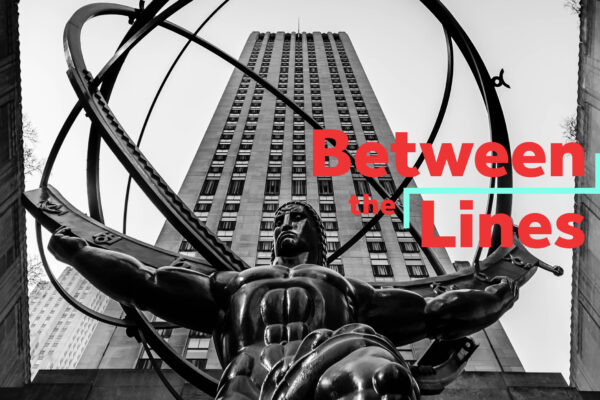Hope is a powerful tool. It has carried many of us through the various crises of the last year. Now, it’s showing us the light at the end of the tunnel. Vaccines are becoming more available, businesses are recovering, Spring is in full bloom and live music is so close you can almost hear it.
There are, however, more deeply seated issues that time alone won’t fix, that require immediate action. The regression of the gender equality movement is one such issue. With the pandemic disproportionately impacting women in the workplace, there are long-term threats to organizations and our economy. Wage gaps, inadequate family leave policies, lack of diversity or representation in leadership. None of these issues are new but, as business leaders and humans, we have to do more than what’s been done now to avoid the long-term future impact to individuals and businesses.
A range of studies and reports were released in March that examined the pandemic’s effect on gender equality in the workplace nationally and around the world. We’ve extrapolated the most important trends, statistics and insights from those reports and provide a few resources that leaders and businesses can reference to stop the pronounced regression of gender equality.
Burning out and the “double shift”
Two-thirds of working women believe the pandemic has made things worse for women at work, making it clear that—on top of the uncertainty and concerns for safety and security we all feel—the additional challenges women face were made even more difficult. The “double shift” that many women are forced to take––the extra household and child care duties immediately following their day jobs––only intensified as the pandemic took its toll. For some, lines blurred during the shift to remote work, while others were forced into a decision they should never have had to make at all: Sacrifice their career or risk their personal sanity, safety and the care of their families, loved ones or children. While this is also certainly true of the broader population in many cases, it’s undeniable that working women shouldered the additional burden and are feeling the consequences of those decisions now more than ever.
IBM’s 2021 “Women in Leadership” survey noted challenges like these are not new, and some organizations did work to expand “access to child care and [introduce] flexible work programs to accommodate women, who globally continue to bear majority responsibility for child care and elder care in their families.” But IBM also found that workplace gender equality efforts “are moving too slowly and, in some cases, are slipping backward” as the expected timeline to closing the global gender gap regressed from 99.5 years to 135.6 years because of COVID-19.
This breaking point can create devastating effects in talent and leadership pipelines, and can greatly impact a woman's career earnings.
CNBC and SurveyMoney’s new “Women at Work” survey found that the mental health of more than half of women participants is suffering, and that they are feeling burned out all or some of the time. Cyclically, this has caused women to also feel less career-ambitious than in years before. This breaking point can create devastating effects in talent and leadership pipelines, and can greatly impact a woman’s career earnings.
Interestingly, Girls in Tech surveyed its members and saw that 76 percent had felt burned out since the start of the pandemic, but that women who work for a company with a female CEO were six times less likely to feel this way, indicating a clear correlation between women in leadership roles and workplace gender equality.
Leadership
There are even fewer women in senior leadership roles in 2021 than there were in 2019, according to IBM. It’s a shocking regression that speaks to both a narrowing leadership pipeline and fewer women available for leadership positions overall.
While there are more women entering the professional workforce globally, bridging the income gap remains a persistent challenge, as does the notable lack of women in leadership, says the World Economic Forum’s “Global Gender Gap Report 2021.” LinkedIn data also shows a decline of women’s hiring into leadership roles, creating a reversal of one to two years of progress across multiple industries. Around the world, women comprise only 27 percent of all manager positions, with that gap widening over the past year.
Just like woman-led tech companies can help mitigate female employees feeling burnout, there are clear business benefits to female leadership that go beyond employees’ mental health. “Organizations with the most women at the top can potentially deliver shared performance and profits that are close to 50 percent higher than those organizations with the fewest,” IBM says.
IBM looked at a subgroup of companies that makes the advancement of women a formal business priority, views gender inclusivity as a driver of financial performance, and are highly motivated to continue making changes to achieve gender equality. This group reported that their gender-balanced leadership led to “revenue growth that’s as much as 61 percent higher than other organizations,” greater innovation, strong customer satisfaction, and high employee satisfaction and retention rates. The benefits have never been more clear.
Long-term effects and how we can mitigate them
With the combined effect of growing “double shifts,” labor market dynamics such as occupational segregation and wage gaps, and lessened leadership roles, “the pandemic is likely to have a scarring effect on future economic opportunities for women, risking inferior re-employment prospects and a persistent drop in income,” according to The World Economic Forum.
In a time when COVID-19 has ruined or set back many women’s careers, we need to address the underlying mindset with more urgency than in the past. We have to be willing to take real action and recognize the strategic value in gender parity. With only one in four organizations making the advancement of women a top priority, relying on conventional approaches won’t close the gender gap, says IBM. Broad-based programs and technical tools don’t lead to breakthroughs––changing behaviors and culture does.
Both IBM and the WEF recommend recovery policies and practices, such as making big commitments by creating intentional, equitable access across projects, hiring and promotions, and developing mid-career re-education and advancement opportunities. This year’s “Women in Leadership” report from IBM provides fantastic resources on creating exponential gains with workplace gender diversity, near the bottom of the report.






